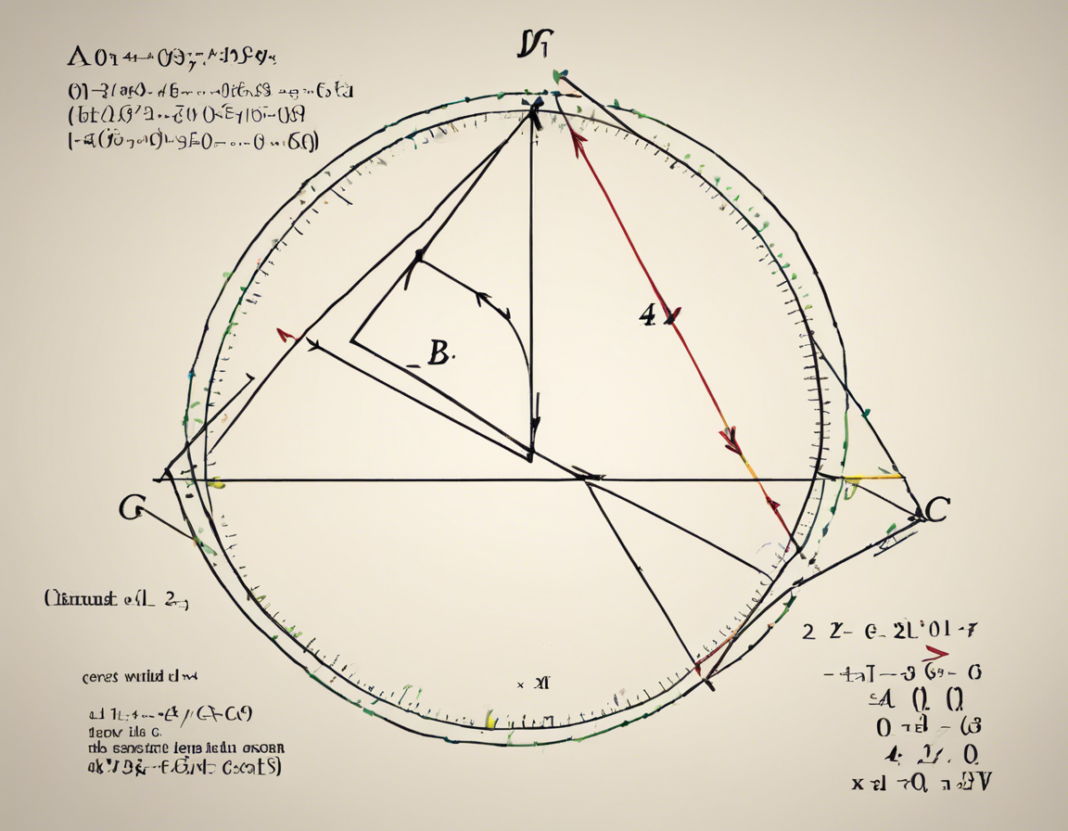Triangles are one of the most fundamental shapes in geometry, with a multitude of properties and characteristics that have fascinated mathematicians for centuries. One such property is the circumradius of a triangle, which plays a crucial role in defining the circle that passes through all three vertices of the triangle. In this article, we will delve into the intricacies of the circumradius of triangles, discussing its definition, properties, calculations, and applications in various mathematical problems.
Understanding the Circumradius
The circumradius of a triangle is defined as the radius of the circumscribed circle that passes through all three vertices of the triangle. This circle, known as the circumcircle, is a unique circle that contains the three vertices of the triangle on its circumference. The center of this circle, called the circumcenter, is equidistant from all three vertices of the triangle.
Properties of the Circumradius
-
Relation to the Side Lengths: The circumradius of a triangle is related to the side lengths of the triangle through the formula:
[ R = \frac{abc}{4A} ]
where ( R ) is the circumradius, ( a, b, c ) are the side lengths, and ( A ) is the area of the triangle.
-
Orthocenter and Centroid: The circumcenter, orthocenter, and centroid of a triangle are collinear, and the distance between the centroid and the circumcenter is twice the distance between the centroid and the orthocenter.
-
Euler’s Theorem: Euler’s theorem states that in any triangle, the circumcenter, centroid, and orthocenter are collinear, and the centroid divides the line segment joining the circumcenter and orthocenter in a (2:1) ratio.
Calculating the Circumradius
The circumradius of a triangle can be calculated using different approaches, depending on the information provided about the triangle. Some common methods include:
-
Using Side Lengths: As mentioned earlier, if the side lengths of the triangle are known, the circumradius can be calculated using the formula ( R = \frac{abc}{4A} ), where ( a, b, c ) are the side lengths, and ( A ) is the area of the triangle.
-
Using Trigonometry: Another approach involves using trigonometric functions to determine the circumradius. For example, in a right triangle, the circumradius can be expressed as half the length of the hypotenuse.
Applications of the Circumradius
The circumradius of a triangle finds applications in various mathematical and geometrical problems, including:
-
Triangle Construction: The circumradius is essential in constructing triangles with specific properties, such as those inscribed in a circle.
-
Triangle Classification: The circumradius can help classify triangles as acute, obtuse, or right based on the relationship between the circumradius and the side lengths.
-
Geometric Constructions: In computational geometry, the circumradius plays a crucial role in various algorithms for geometric constructions and calculations.
FAQs about the Circumradius of Triangles
-
What is the relationship between the circumradius and the inradius of a triangle?
The circumradius and the inradius of a triangle are related through the formula ( R = \frac{abc}{4A} = \frac{abc}{(a + b + c)r} ), where ( R ) is the circumradius, ( a, b, c ) are the side lengths, ( A ) is the area, and ( r ) is the inradius of the triangle. -
Can the circumradius of a triangle be zero?
No, the circumradius of a non-degenerate triangle (a triangle with positive area) cannot be zero. A triangle with zero circumradius would be a degenerate case where the three vertices are collinear. -
How does the circumradius relate to the circumcenter of a triangle?
The circumradius is the distance between the circumcenter (center of the circumcircle) and any vertex of the triangle. It is also the radius of the circumcircle that passes through all three vertices of the triangle. -
Is the circumradius the same for similar triangles?
No, the circumradius of similar triangles is not the same. The circumradius is directly related to the side lengths and area of the triangle, so similar triangles with different side lengths will have different circumradii. -
Can the circumradius be negative?
Since the circumradius is a measure of length, it cannot be negative. Negative values do not have geometric meaning in the context of the circumradius of a triangle.
In conclusion, the circumradius of a triangle is a key geometrical parameter that influences the shape and properties of the triangle. Understanding its significance and applications can enrich our knowledge of geometry and mathematical problem-solving. By exploring the relationship between the circumradius and other elements of a triangle, we can deepen our appreciation for the beauty and complexity of geometric principles.

